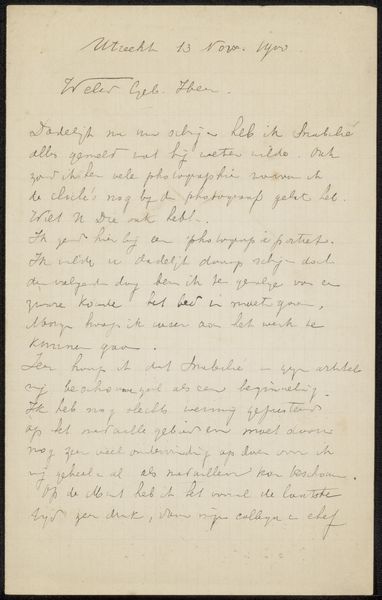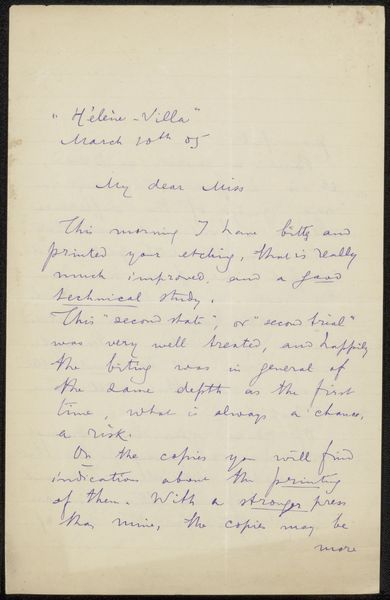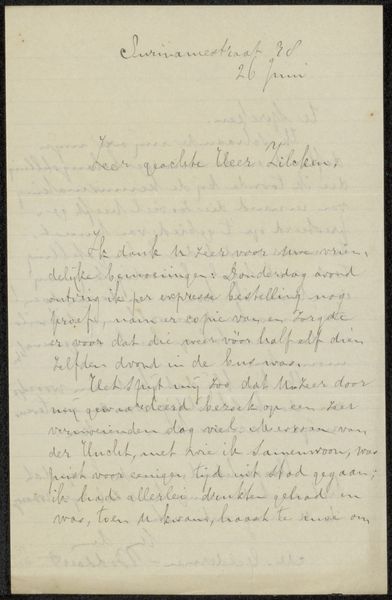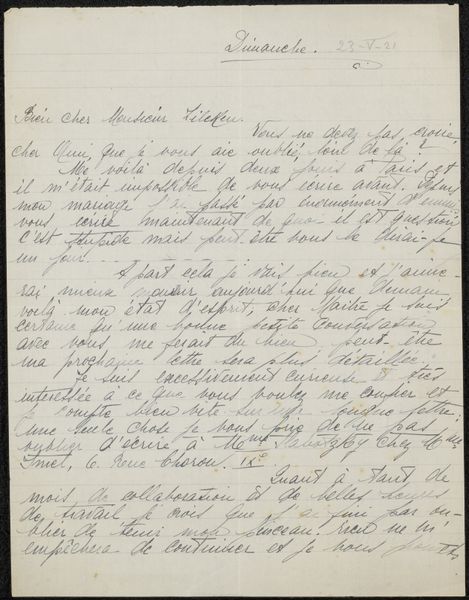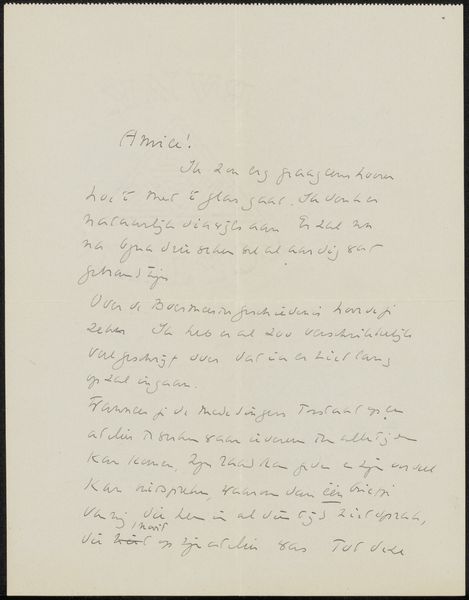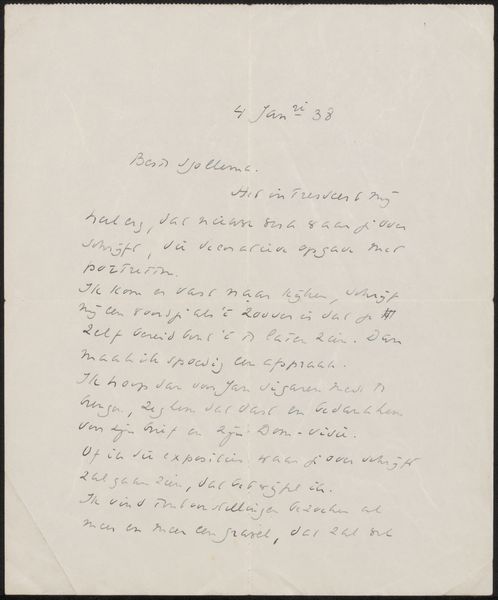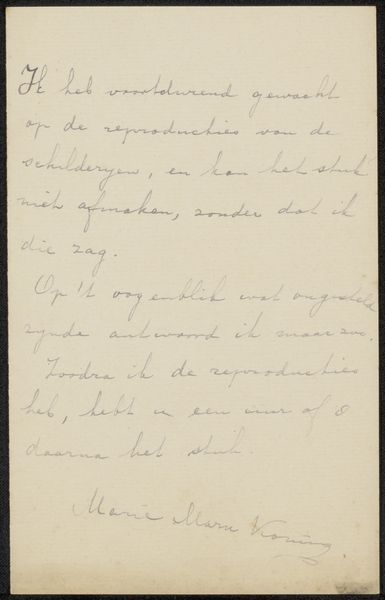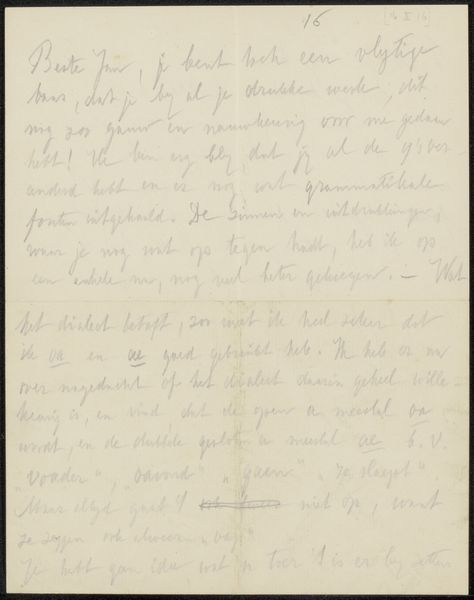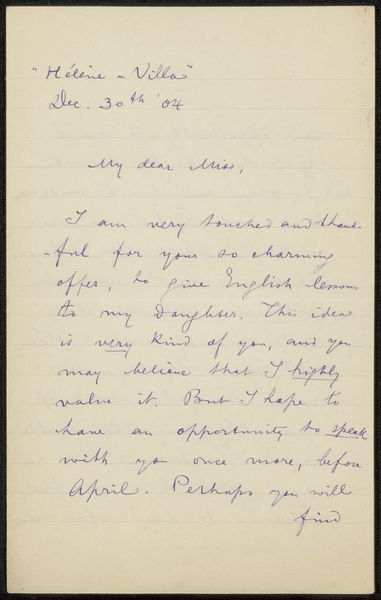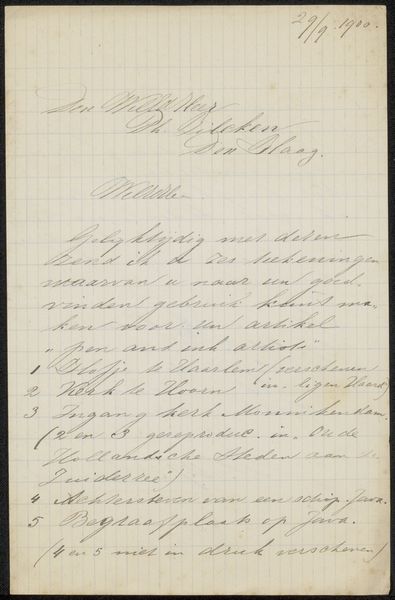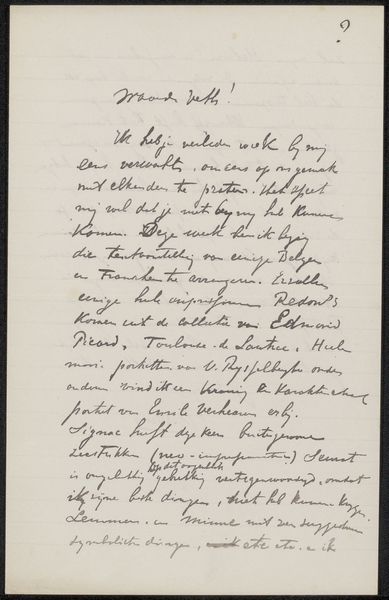
drawing, paper, pen
#
drawing
#
paper
#
pen work
#
pen
Copyright: Rijks Museum: Open Domain
Curator: Here we have a fascinating glimpse into the past: "Brief aan Elsie Maud Cownie," possibly created between 1905 and 1919 by Philip Zilcken. It resides here with us at the Rijksmuseum. My immediate reaction is one of intimacy, like intruding on a private exchange. The script itself possesses an aesthetic quality beyond its utilitarian function. Editor: It's intriguing how such a commonplace item transforms into a work of art over time. It appears to be written with pen on paper. What can we learn about Zilcken's practice and the materials he employed? Was this a typical medium for his correspondence, or does it indicate something about his access to resources, or perhaps his aesthetic preferences? Curator: Absolutely, let's consider the material conditions. The use of pen, most likely fountain pen or dip pen based on the fluidity of the writing, gives clues about his time and place. Moreover, the paper itself, with its grid pattern visible beneath the script, signifies both practicality and the standardization of office supplies becoming prevalent at that time. How would you describe the formal qualities of the script, considering that it is clearly intended to convey much more than mere writing? Editor: The letterform itself offers insight; note how the cursive connects words seamlessly to evoke a sense of flow, despite occasional blotches marring the pristine impression. Note also how the slight variations in line thickness and the pressure applied by the pen give the letter a unique personality—something utterly distinct from mechanized print. It exudes thoughtfulness and precision. Curator: That’s a key element—the interplay between standardized materials and the artist’s individual touch. And that Zilcken even produced the letter, reveals a larger conversation about what was deemed worthy of artistic expression, broadening the scope of artistic labor beyond painting and sculpture. Was writing, letter writing and cursive deemed in some ways as expressive, if mundane. Editor: Precisely. These aesthetic choices create depth by blurring the boundary between mere craft and deliberate art. By close examination of the materials, combined with Zilcken's handwriting as an intrinsic form, we uncover how art evolves across varied platforms through thoughtful deployment of standard tools, from paper textures to precise pen strokes. Curator: Indeed, studying pieces such as this expands how we perceive art through historical contexts while exploring how materials shape not only art itself but also, importantly, influence expressions in it, while offering insight to labor practices for which its existence comes to being. Editor: An engaging conversation starter! Thanks for sharing a lens into Zilcken's private, material practice.
Comments
No comments
Be the first to comment and join the conversation on the ultimate creative platform.
